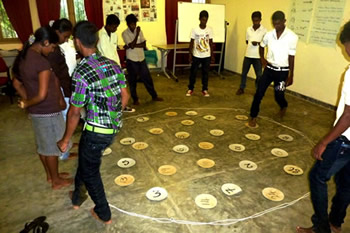Site will be
unavailable for maintenance from June. 4, 11:30 p.m., to June 5, 12:30 a.m. ET. Thank you for your
patience!
Youth Employment Programs Address Urgent Need
Posted on 01/05/2014
Almost 74 million youth ages 15 to 24 are unemployed. For young people in developing countries, the job outlook is especially bleak, with few opportunities to escape the generational cycle of poverty. To respond to this challenge, ChildFund has developed a Youth Employment Model, with five components:
- A market survey, to ensure job training is demand driven
- technical skills training and production support
- basic business skills training
- life skills training
- ongoing mentoring

Young people in Zambia helped build this solar panel-powered irrigation system to water a banana plantation.
Since the program began four years ago, more than 25,000 young people in The Gambia, Ethiopia, Kenya, Sri Lanka, Sierra Leone, Uganda and Zambia have participated in employment programs that include a mix of classroom training, textbook and individual study and facilitated group activities.
In addition to providing youth with technical fundamentals and workplace readiness skills (e.g., communication, functional literacy and numeracy, problem-solving, accountability), ChildFund places a special focus on enhanced life skills training. “Our work with youth goes beyond traditional life skills to include the psychosocial side, such as how to have strong relationships with family members and other adults — skills that will also serve young people well in the workplace,” says Lloyd McCormick, ChildFund’s director of youth programs.
ChildFund has set a benchmark for success: employment at a decent wage under non-exploitative conditions. We also provide close follow-up for the first six to 12 months that a youth is on the job or launching a business, offering ongoing mentoring and guidance.
Once young people have completed the Youth Employment Model, ChildFund measures program effectiveness by using the Youth Employment and Well-Being Scorecard. This simple 14-question survey is designed to gauge employment success as well as youths’ overall outlook on their transitions into the workplace, whether they are earning a living wage, have dependable access to health care and are engaging in civic activities.
Loading...


